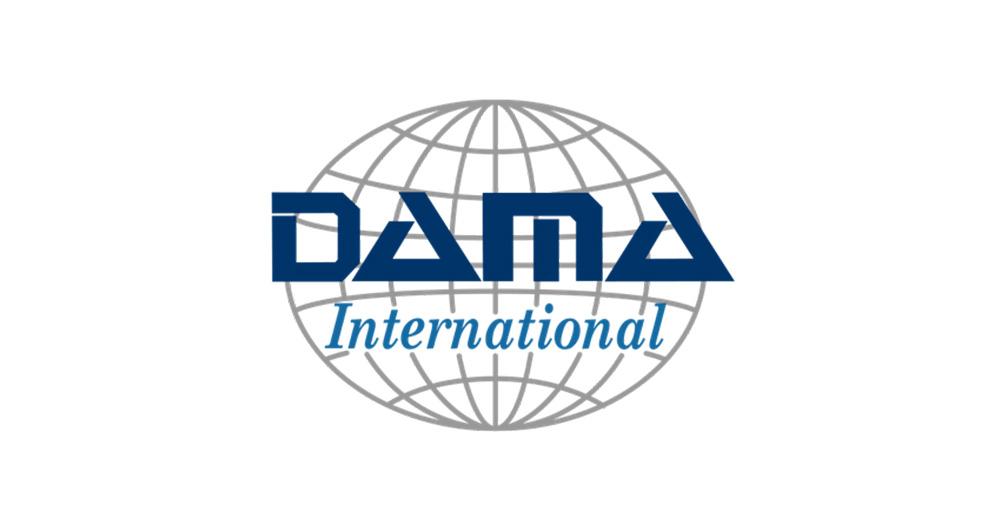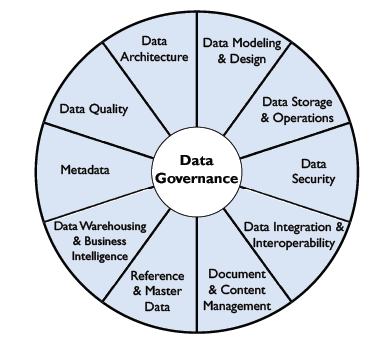
In the current environment, organisations are trying to improve the exploitation of their data through the use of new technologies, providing the business with additional value and turning data into their main strategic asset.
However, we can only extract the real value of data if it is reliable and for this, the function of Data Governance arises, focused on the efficient management of information assets. Open data cannot be alien to these practices due to its characteristics, mainly of availability and access.
To answer the question of how we should govern data, there are several international methodologies, such as DCAM, MAMD, DGPO or DAMA. In this post, we will base ourselves on the guidelines offered by the latter.
What is DAMA?
DAMA, by its acronym Data Management Association, is an international association for data management professionals. It has a chapter in Spain, DAMA Spain, since March 2019.
Its main mission is to promote and facilitate the development of the data management culture, becoming the reference for organisations and professionals in information management, providing resources, training and knowledge on the subject.
The association is made up of data management professionals from different sectors.
Data governance according to DAMA's reference framework
“A piece of data placed in a context gives rise to information. Add intelligence and you get knowledge that, combined with a good strategy, generates power”
Although it is just a phrase, it perfectly sums up the strategy, the search for power from data. To achieve this, it is necessary to exercise authority, control and shared decision-making (planning, monitoring and implementation) over the management of data assets or, in other words, to apply Data Governance.
DAMA presents what it considers to be the best practices for guaranteeing control over information, regardless of the application business, and to this end, it positions Data Governance as the main activity around which all other activities are managed, such as architecture, interoperability, quality or metadata, as shown in the following figure:

The Data Government's implementation of open data
Based on the wheel outlined in the previous section, data governance, control, quality, management and knowledge are the key to success and, to this end, the following principles must be complied with:

To achieve data compliance with these principles, it will be necessary to establish a data governance strategy, through the implementation of a Data Office capable of defining the policies and procedures that dictate the guidelines for data management. These should include the definition of roles and responsibilities, the relationship model for all of them and how they will be enforced, as well as other data-related initiatives.
In addition to data governance, some of the recommended features of open data management include the following:
- An architecture capable of ensuring the availability of information on the portal. In this sense, CKAN has become one of the reference architecture for open data. CKAN is a free and open source platform, developed by the Open Knowledge Foundation, which serves to publish and catalogue data collections. This link provides a guide to learn more about how to publish open data with CKAN.
- The interoperability of data catalogues. Any user can make use of the information through direct download of the data they consider. This highlights the need for easy integration of information, regardless of which open data portal it was obtained from.
- Recognised standards should be used to promote the interoperability of data and metadata catalogues across Europe, such as the Data Catalogue Vocabulary (DCAT) defined by the W3C and its application profile DCAT-AP. In Spain, we have the Technical Interoperability Standard (NTI), based on this vocabulary. You can read more about it in this report.
- The metadata, understood as the data of the data, is one of the fundamental pillars when categorising and labelling the information, which will later be reflected in an agile and simple navigation in the portal for any user. Some of the metadata to be included are the title, the format or the frequency of updating, as shown in the aforementioned NTI.
- As this information is offered by public administrations for reuse, it is not necessary to comply with strict privacy measures for its exploitation, as it has been previously anonymised. On the contrary, there must be activities to ensure the security of the data. For example, improper or fraudulent use can be prevented by monitoring access and tracking user activity.
- Furthermore, the information available on the portal will meet the technical and functional quality criteria required by users, guaranteed by the application of quality indicators.
- Finally, although it is not one of the characteristics of the reference framework as such, DAMA speaks transversally to all of them about data ethics, understood as social responsibility with respect to data processing. There is certain sensitive information whose improper use could have an impact on individuals.
The evolution of Data Government
Due to the financial crisis of 2008, the focus was placed on information management in financial institutions: what information is held, how it is exploited... For this reason, it is currently one of the most regulated sectors, which also makes it one of the most advanced with regard to the applicability of these practices.
However, the rise of new technologies associated with data processing began to change the conception of these management activities. They were no longer seen so much as a mere control of information, but considering data as strategic assets meant great advances in the business.
Thanks to this new concept, private organisations of all kinds have taken an interest in this area and, even in some public bodies, it is not unusual to see how data governance is beginning to be professionalised through initiatives focused on offering citizens a more personalised and efficient service based on data. For example, the city of Edmonton uses this methodology and has been recognised for it.
In this webinar you can learn more about data management in the DAMA framework. You can also watch the video of their annual event where different use cases are explained or follow their blog.
The road to data culture
We are immersed in a globalised digital world that is constantly evolving and data is no stranger to this. New data initiatives are constantly emerging and an efficient data governance capable of responding to these changes is necessary.
Therefore, the path towards a data culture is a reality that all organisations and public bodies must take in the short term. The use of a data governance methodology, such as DAMA's, will undoubtedly be a great support along the way.
Content prepared by David Puig, Graduate in Information and Documentation and head of the Master and Reference Data working group at DAMA SPAIN, and Juan Mañes, expert in Data Governance.
The contents and points of view reflected in this publication are the sole responsibility of its author.